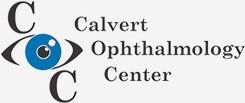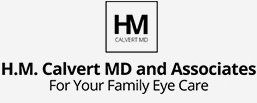The Ultimate Guide to Different Glasses and Contacts To Consider as a Vision Aid
- By No Author
- •
- 15 Feb, 2024
- •
Having poor eyesight can be a challenge, but luckily, there are many options to help you see clearly. Glasses and contacts are two of the most popular choices for improving vision, but with so many different types available, it can be overwhelming to decide which one to choose. That's why we've put together the ultimate guide to help you navigate the different styles of glasses and contacts to consider as a vision aid.
Types of Glasses
Single Vision Glasses
These are your standard glasses, with a single prescription across the entire lens. They are a versatile option, providing clear vision for either distance or reading needs. Whether you're immersed in a captivating book or admiring a picturesque view, single-vision glasses have got you covered.
Bifocals
Bifocals offer a convenient solution for individuals requiring both distance and reading correction. With two different prescriptions in one lens, you can effortlessly switch between activities without changing your glasses. The upper portion of the lens focuses on distant objects, while the lower portion aids in reading fine print or enjoying your favorite novel.
Trifocals
Trifocals provide excellent clarity for those needing intermediate vision, such as working on a computer or engaging with digital screens. With three different prescriptions in one lens, you can effortlessly transition between distance, intermediate, and reading vision. From driving to browsing the internet, trifocals accommodate all aspects of your daily life.
Progressive Lenses
Progressive lenses offer the benefits of multiple prescriptions without visible lines and are a popular choice. With a seamless transition between different vision needs, these lenses cater to distance, intermediate, and reading prescriptions. Whether attending a business meeting, using your smartphone, or enjoying a good book, progressive lenses deliver clear vision at every focal point.
Types of Contacts
Soft Contacts
Soft contacts are the most commonly used type of contact lens made of flexible, water-containing plastic. They are designed to fit the curvature of the eye comfortably, providing a secure and snug fit. These lenses come in a variety of prescriptions, catering to different visual needs, such as nearsightedness, farsightedness, and astigmatism. Soft contacts offer excellent comfort and ease of use, making them popular for many contact lens wearers.
Gas Permeable (GP) Contacts
GP contacts are made of a rigid, oxygen-permeable material that allows for efficient oxygen flow to the cornea. This promotes the overall health of the eye while providing clear and crisp vision. Unlike soft contacts, GP lenses maintain their shape on the eye, ensuring consistent vision correction. They are often recommended for individuals with more complex prescription needs, including high astigmatism or irregular corneas.
Hybrid Contacts
Hybrid contacts combine the best features of both soft and GP lenses. They have a rigid center that provides sharp vision, similar to GP lenses, surrounded by a soft outer ring that enhances comfort and ease of wear. This unique design allows for optimal visual acuity and comfort, making hybrid contacts an excellent choice for individuals who desire clarity and comfort in their contact lenses.
Scleral Contacts
Scleral contacts are a type of GP lens that offers remarkable benefits for individuals with corneal irregularities. These lenses cover the entire cornea and rest on the sclera, providing a smooth and stable surface for vision correction. Scleral contacts not only provide excellent visual clarity but also offer superior comfort by vaulting over the irregular cornea, minimizing any potential discomfort caused by irregularities.
There is no one-size-fits-all solution when choosing the right glasses or contacts. It's important to consider your specific needs and preferences and consult with your eye doctor. With the ultimate guide above, you can make a more informed decision and confidently choose the option that best suits you. Remember to prioritize clarity and simplicity, whether you're explaining the benefits of a specific lens or discussing the pros and cons of different types of contacts.
Contact us today to learn about different vision aids, and let us help you on your journey to better vision.









